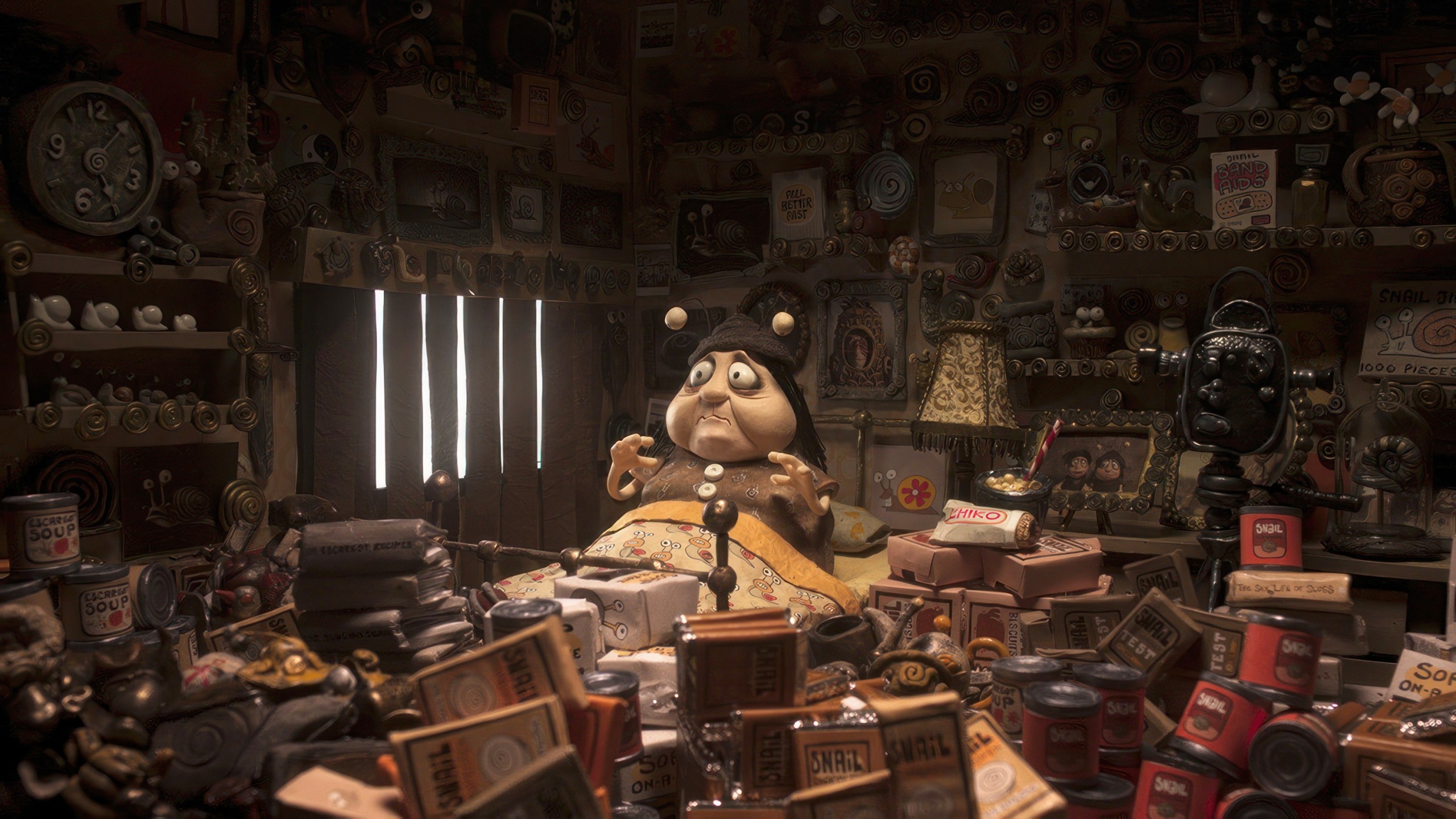The beauty of stop-motion animation is in its handmade production, where the artists’ fingers are present on the characters, sets, and backgrounds. Technological advances have made these labor-intensive films easier to create — but “Memoir of a Snail” writer/director Adam Elliot wanted his film to remain as handmade as possible.
“We wanted to celebrate the lumps and bumps,” Elliot told IndieWire. “We use two words a lot in the studio: chunky wonky. Everything has to look a bit imperfect, asymmetrical, a bit rough around the edges. But on the other hand, we don’t want it to look too rough that it looks amateurish and looks like a student film.”
That’s the balancing act at the center of “Memoir of a Snail,” a darkly humorous animated drama about the misfortunes of snail collector Grace, who must learn to find her confidence and overcome great tragedies. For Elliot, who has made films for nearly 30 years, it was important to have as much detail in the film as possible while crafting a unique look that could stand out from the Aardmans and the Laikas of the world. Lumpy but not too lumpy, with everything you see on the screen made by hand, even fire (yellow cellophane) and cigarette smoke (cotton wool). There’s still CGI (mostly to clean up the footage, remove the rigs, and do color grading), but the animation is done entirely traditionally.
That spirit is best exemplified in the opening scene, a long tracking shot title sequence through a room full of snail memorabilia. It’s a stunning shot, a homage to Jean-Pierre Jeunet and Marc Caro’s “Delicatessen,” and also a clever way of displaying the many company logos of an independent production by placing them on the thousands of items. When asked about the weirdest piece of snail memorabilia, Elliot’s answer came quickly: “Probably the little snail condoms.”
“It was probably the most difficult shot I’ve ever done in the last 28 years of making films,” Elliot said. “We had to set up the camera, which was a giant robotic arm with the camera on the end, a very thin lens called a snorkel lens. Our cinematographer and camera department programmed the robot to move a frame at a time, and it moves for a minute and a half. That’s a lot of frames.”
In the sequence, the only animation is half a dozen frames of a toilet seat falling down (that one has Elliot’s name on it). Still, Elliott refused to shoot the scene in live-action as a continuous shot. It would have been much easier and faster,but it would defeat the purpose. “I’m a real purist in that every one of my films, every shot in every single film, has been done in the traditional stop motion method,” explained Elliott. “I think audiences now really appreciate stop motion as an art form, and they don’t want to be fooled too much. What audiences are appreciating is that everything they see on the screen and everything in one of my films is something you could really hold in your hand.”

“Memoir of a Snail” doesn’t just look different than other stop motion films due to its design but also its use of color, relying on only different shades of brown. Originally, Elliot wanted to make the film in black and white, but when the investors refused, he still eschewed bright colors. “I didn’t want it to be too colorful, I wanted a very warm color palette, more like autumn leaves,” Elliot said.
Brown became the main color for the film because, as Elliot explained, the color was everywhere in the 1970s, from houses to carpets to walls. It also helped link the film’s aesthetic to Grace’s psychological state. Blue and green are nowhere to be found in the film because, as Elliott said, “I hate those colors.”
“I love using color as a filmic device. I think in animation, colors are usually just there for aesthetic reasons and not really there to enhance a moment or enhance the poignancy of a sequence,” the director explained.
The arduous process of making the movie echoes the suffering that Grace experiences, including losing family, love, and friends in increasingly dark ways. In the end, however, the effort paid off because the film balances that with moments of levity and a happy ending, which was important for Elliot.
“I didn’t want the film to be too dark,” he said. “I wanted a happy ending, and I wanted there to be as much humor as possible. So if the sequence was getting too depressing, I would stick in a whole lot of jokes straight afterwards to get that balance. I certainly wanted the audience to be emotionally drained by the end. I certainly do make my protagonist suffer by it a lot. I’m quite cruel to Grace. But I think Grace is essentially a survivor, and that’s what makes her heroic.”
“Memoir of a Snail” is now available on VOD.




